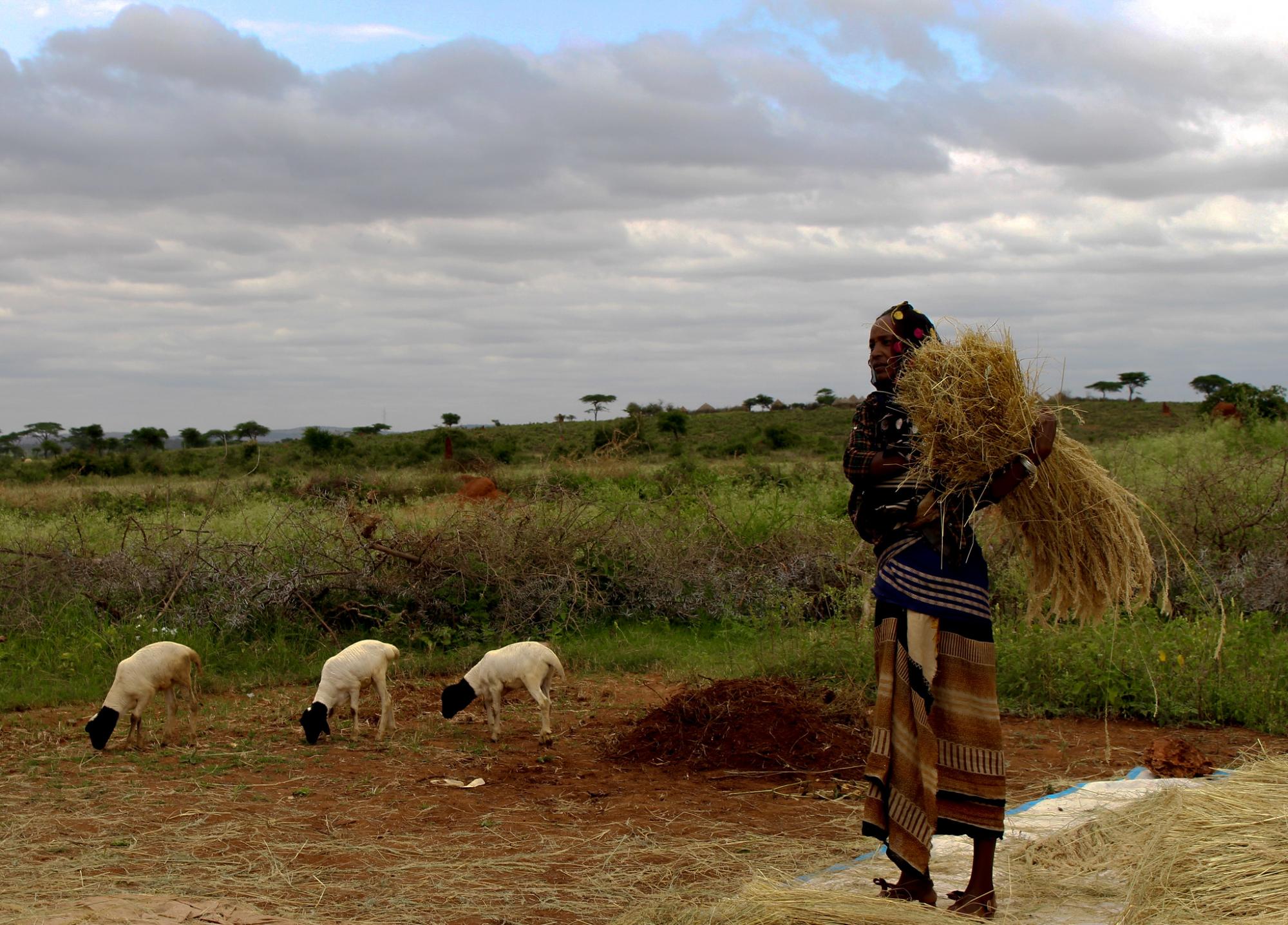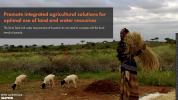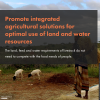
Promote integrated agricultural solutions for optimal use of land and water resources
The land, feed and water requirements of livestock do not need to compete with the food needs of people.
Core message
Facts
Raising livestock supports the arable farming of crops.
Small-scale farmers prevent feed crops from competing with food crops in many ways, such as growing forage crops beside hedges or as strip crops that help prevent soil erosion.
Manure from animals fed on the stalks, leaves and other residues of crop plants after their grain has been harvested fertilizes crop soils and enhances crop productivity.
Actions
Implement policies that enhance agricultural productivity among smallholders by incorporating both livestock and crops and by promoting integrated solutions that maximize the use of human-inedible feed resources.
Provide appropriate land-use mapping and planning for extensive livestock production systems that require sustained livestock mobility; ensure that land-use plans, for example, protect livestock movement corridors and support them with infrastructure.
Provide pastoral and agro-pastoral communities with incentives for judicious decision-making that leads to greater rangeland productivity and sustainable land management.
Restore degraded rangelands by enhancing livestock productivity, promoting community-based range management and enhancing livestock insurance schemes that obviate the need to keep excess stock for insurance purposes.
Support farmers raising animals as well as growing crops to enhance their land and water management by growing forage crops that help prevent soil erosion and enhance soil fertility through nitrogen fixation.

